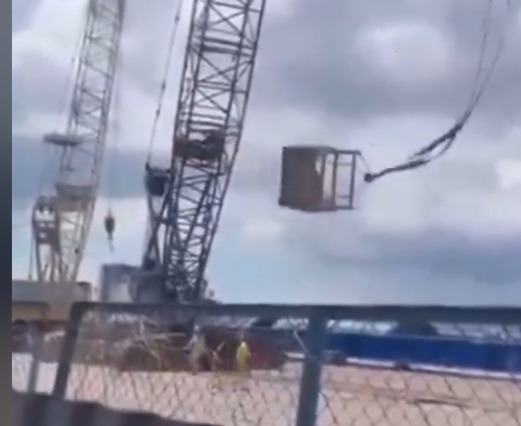
Authored by Ed Davidson with Long Foundation Drilling Co. and originally published on LinkedIn
Ummmm...
I don't think that's what the standard means by test your man basket!
Personnel crane baskets, also called man baskets, are used to lift workers to sites at height. Although crane man baskets are a common solution for at height work in many construction industries, OSHA has established that using man baskets is more hazardous than using more conventional methods, like scaffolding or aerial work platforms.
Consequently, OSHA has created a set of standards governing the use of crane man baskets. Following these standards is necessary not just to keep your company compliant, but also to keep yourself and your coworkers safe.
When should crane baskets be used?
According to OSHA, crane baskets may only be used when other methods are impossible or more hazardous than using a basket. A competent person must make the decision authorizing each use of a crane basket.
Once it’s determined by a competent person that a man basket is the right solution for the application at hand, a visual inspection must be performed prior to each use.
In addition to a visual inspection, crane baskets must be tested to 125% of their rated capacity before each use. This test includes holding the basket at 125% of rated capacity for 5 minutes at each station the basket will be used at.
Each test must be documented to keep OSHA compliant records.
To prevent falls, in addition to using a man basket with guard railings and a sufficient rated capacity, workers being lifted in man baskets must use proper fall protection and safety equipment: a body harness, lanyard, and hard hat. Each piece of personal protective gear should be inspected before getting in a personnel basket.
Personnel baskets are required to meet strict design standards: they have to be designed by a qualified engineer and meet or exceed OSHA standards.
All of ELT’s crane man baskets are designed to exceed these OSHA standards, including:
- Smooth, snag-free surfaces
- Balanced and wind-resistant design with sufficient room to stand
- Overhead protection for applications with a falling object hazard
- Secure guardrail system
- Locking gates
- Clearly labeled with rated load capacity
Crane baskets shouldn’t be used near power lines or other electrical hazards, or in dangerous weather conditions like rain or high winds.
When lifting personnel, the crane operator must take extra precautions and care. Movements should be made slowly and carefully, keeping in mind that it’s your coworker up in the sky, not just a basket of materials.


